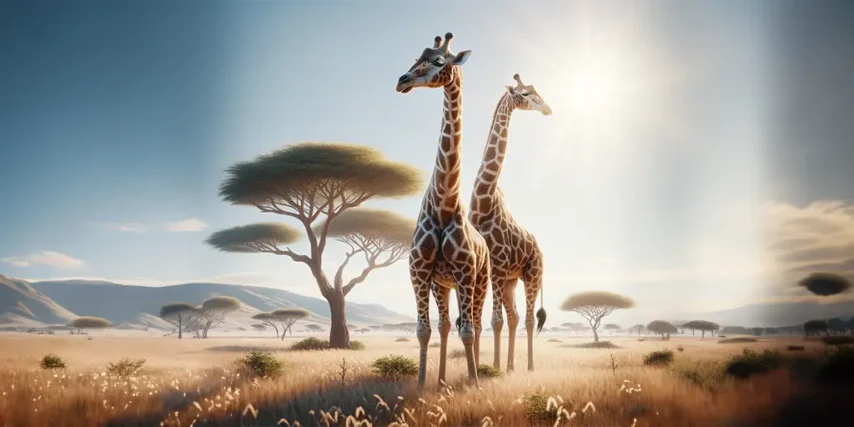Giraffes are fascinating creatures, known for their extraordinary height and distinctive spotted coats. As the tallest mammals on Earth, giraffes have intrigued scientists and animal lovers alike for centuries. In this article, we will delve into the unique characteristics, behavior, and conservation status of these magnificent animals.
Physical Characteristics
Giraffes are easily recognizable by their long necks and legs, which enable them to reach heights of up to 18 feet (5.5 meters) in males and 14 feet (4.3 meters) in females. Their necks alone can measure up to 6 feet (1.8 meters) and contain the same number of vertebrae as a human neck—seven. Each vertebra, however, is much larger, providing the necessary support for their elongated structure.
Their coat patterns are not just for show; each giraffe has a unique pattern of spots that helps with camouflage in their natural habitat. These spots also play a role in thermoregulation, helping giraffes maintain their body temperature in the hot African savannah.

Behavior and Diet
Giraffes are primarily browsers, feeding on leaves, flowers, and fruits from trees, particularly acacia trees. Their long necks and prehensile tongues, which can be up to 18 inches (45 centimeters) long, allow them to reach foliage that is inaccessible to other herbivores. They can consume up to 75 pounds (34 kilograms) of vegetation per day.
Despite their height and size, giraffes are relatively gentle creatures. They spend most of their time grazing and socializing in loose herds. Males engage in a behavior known as “necking,” where they swing their necks and heads at each other to establish dominance and gain mating rights.

Habitat and Distribution
Giraffes are native to Africa, with their range spanning several countries, including Kenya, Tanzania, Botswana, Namibia, and South Africa. They inhabit savannahs, grasslands, and open woodlands where acacia trees are abundant.
There are four distinct giraffe species: the Northern giraffe, Southern giraffe, Reticulated giraffe, and Masai giraffe. Each species has a different geographic distribution and slight variations in coat patterns.
Conservation Status
While giraffes are a common sight in zoos and wildlife documentaries, their numbers in the wild are declining. Habitat loss, poaching, and human-wildlife conflict have contributed to a significant reduction in their populations. According to the International Union for Conservation of Nature (IUCN), some giraffe species are listed as vulnerable or endangered.
Conservation efforts are underway to protect these majestic animals. Organizations are working to preserve their habitats, mitigate human-wildlife conflicts, and support anti-poaching measures. Public awareness and support for giraffe conservation are crucial for ensuring their survival.

Conclusion
Giraffes are truly remarkable animals, embodying the beauty and diversity of the African wilderness. Their unique adaptations and gentle nature make them a beloved subject of study and admiration. By supporting conservation efforts and raising awareness, we can help protect giraffes and ensure they continue to grace our planet for generations to come.







